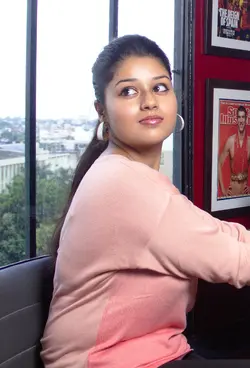You're always going to get some specularity in a strobe exposure. You can reduce it by moving the lights closer, reducing their output and/or adding additional layers of diffusion material.
Thanks for the suggestion, but I didn't understood it completely.
Moving closer and farther will make the effective light source bigger & smaller, but how will it reduce this?
Can you provide more details on to it. ?
Thanks
It's all about the "angular" size of the light source. Is it a "pinpoint" source of light vs. a nice large broad area that emits light.
Suppose I have a large softbox... let's say it's 48" square (or round, doesn't matter). 48" (4') is much larger than your subject's head. So if this softbox were merely inches away, that light would be lighting up your subject's face from seemingly all directions... above, below, left, right, etc. If you were to draw an imaginary line from the top of your subjects head to the top of the softbox, and another from the bottom of your subjects head to the bottom of the softbox, those two lines would form a very large angle (probably something like 160º).
NOW... imaging pulling that softbox away... very very very far away... put it at the opposite end of a football field. So now you have a 4' diameter softbox but it's located 300' away. That's significantly less than 1º angle... in other words that "softbox" is now effectively a pin-point source of light (the Sun is about 109x wider than the diameter of the entire Earth, but at about 93 million miles away it appears as a light source which is merely 1/2º from edge to edge.).
More distance between the light and the subject makes the light source smaller and this creates stronger edges on the shadows. If the softbox is closer than you get softer edges on the shadows.
But that's only half the problem... because when you put the light closer, it seems brighter and when it's farther away it seems dimmer. The "inverse-square law" describes exactly how this works. I use a garden-hose sprayer as an analogy. Imagine a garden hose with a spray nozzle. The spray nozzle is adjusted for a nice wide spray. Hold that nozzle merely 1 inch from your face and turn it on and 100% of the drops of water are going to hit you. Move that spray nozzle 10' away and only a few drops hit you. But this isn't because there is less water being sprayed... it's the same flow rate. It's because at 10' away, MOST of those water drops are going to left, or right, or down, or fly over your head ... and only a few will actually hit your face. It's the same with light. The greater the distance, the more the light has the chance to spread out.
This means if you move the light source closer, you get a broader and softer light... but it's also brighter, so you need to de-power the light to compensate. If you pull the light farther away, you get a finer point source of light, but it's dimmer....so you need to increase power on the light to compensate.
The magic value is the square root of 2 (approximately 1.4 and for photographic purposes that's close enough). If you move the light farther by a ratio of 1.4 then the light will seem to be half as bright. If you move it closer by that ratio then it will seem twice as bright. In other words if the light was 5' away originally then 5 x 1.4 = 7' So at 7' the light will appear be exactly half as bright as when it was 5' away. In the opposite direction 5 ÷ 1.4 = 3.5 (I've rounded that value) so at about 3.5' the light will seem twice as bright as it was when it was 5' away. But if you cut the power output by 1/2 the light would appear to be the same brightness... but softer because it's coming from a broader area.
You may want to pick up a good book on lighting... you might pick up a copy of "Light Science & Magic".














